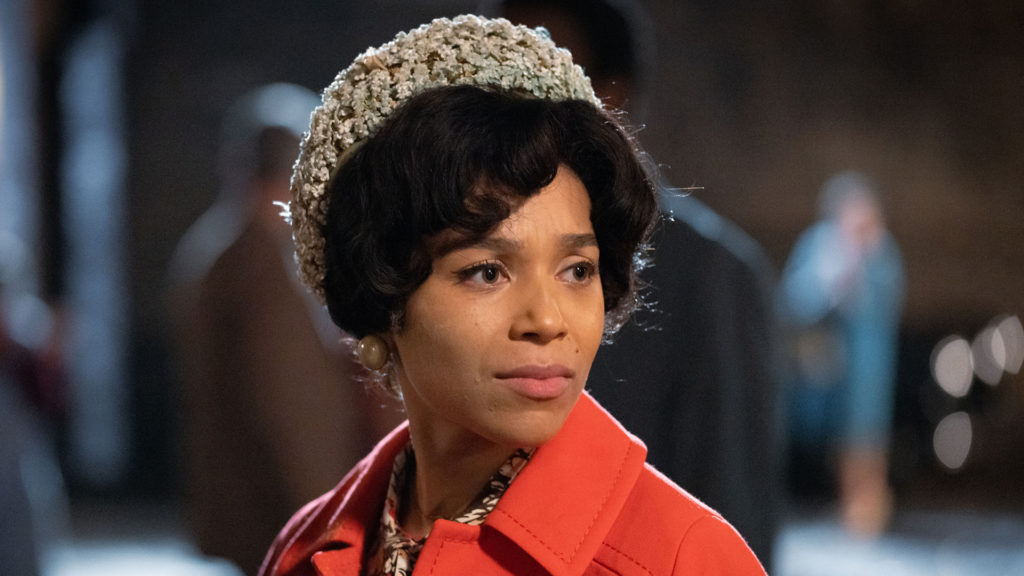
Call the Midwife is back for its 11th season and so are the faculty of the Vanderbilt University School of Nursing to provide historical and contemporary context in a weekly recap blog. Watch the show Sundays at 7 p.m. through May 8. SPOILER ALERT: Some posts may contain plot details.
During midwifery school, my friends and I gathered weekly to delight in each new episode of Grey’s Anatomy. As the unlikely plots played out, we howled with laughter at the medical inaccuracies. An entire hospital run by six surgeons who treat everything from rashes to cancer in between romantic interludes! Why is that neurologist performing a C-section? We couldn’t get enough.
Certainly, this episode of Call the Midwife ends with a Grey’s-style cliffhanger, and I will be nibbling my nails until I know that Sister Julianne survived the train crash. But in general, Call the Midwife is exactly the opposite of Grey’s Anatomy: the medical plotlines are accurate, complex. We modern midwives delight in watching labor and birth portrayed as they really are: lengthy, difficult, messy, miraculous. But I also appreciate the careful accuracy of all the medical storylines. This episode presents a common clinical scenario: finding a birth control method for a patient with a complicated life. Helping women plan and prevent pregnancies is a bread-and-butter topic for every midwife, in every practice setting. It’s not sexy or dramatic, but it’s common.
Family planning is just one challenge facing young teen mother, Carol, who parents baby Dean as a single mom in a foster home. Sister Francis recognizes how vulnerable Carol is, caring for a newborn without family or peer support, without a partner or stable housing. The midwife can see how easily loneliness or exploitation might result in another pregnancy. In fact, Carol is already pregnant again with a baby who arrives so prematurely that it may not survive. Though Carol is fictional, her situation is well established.
Research tells us that young teen mothers are particularly at risk of rapid repeat pregnancies (typically defined as another pregnancy within 12 to 24 months) and that those pregnancies have increased risk of preeclampsia and preterm birth. We also know that long-acting reversible contraceptives (LARCs) are very effective at preventing repeat pregnancies among young mothers. In fact, over the past 20 years in the U.S. we’ve seen a significant drop in the rate of rapid repeat pregnancies among teens as the rate of LARC use went up.
Sister Carol is exactly right that a young teen is likely to miss doses of contraceptive pills, which only work if you use them. An IUD or a Nexplanon is a device placed within the body for years of pregnancy prevention, then easily removed. LARCs are highly effective in part because there’s no opportunity for user error. They offer very effective contraception without daily doses, prescription refills or clinic visits, opening up precious time for teens to grow into adulthood, into motherhood, without the surprise of another pregnancy.
For me, one of the best and worst parts of midwifery is that our role is strictly defined. I like having a skill to offer, an area of expertise. But when I have a patient like Carol, I often feel frustrated and inadequate. I can offer only safe maternity care, reassurance, contraception and community referrals. The Nonnatus House midwives have the luxury of home visits, but I rely on patients to come to me. Often that means I’ll send a young mom out of my office postpartum, knowing how vulnerable and alone she is, without anything further to do for her. I worry about these patients. I worry less when they have a LARC placed postpartum, knowing that at least the risk of rapid repeat pregnancy is minimal, giving the best odds of success to both mom and baby.

Kate Virostko, MSN, CNM, is a member of the Vanderbilt Nurse-Midwives & Primary Care for Women at Melrose, the clinical practice of the Vanderbilt University School of Nursing.
